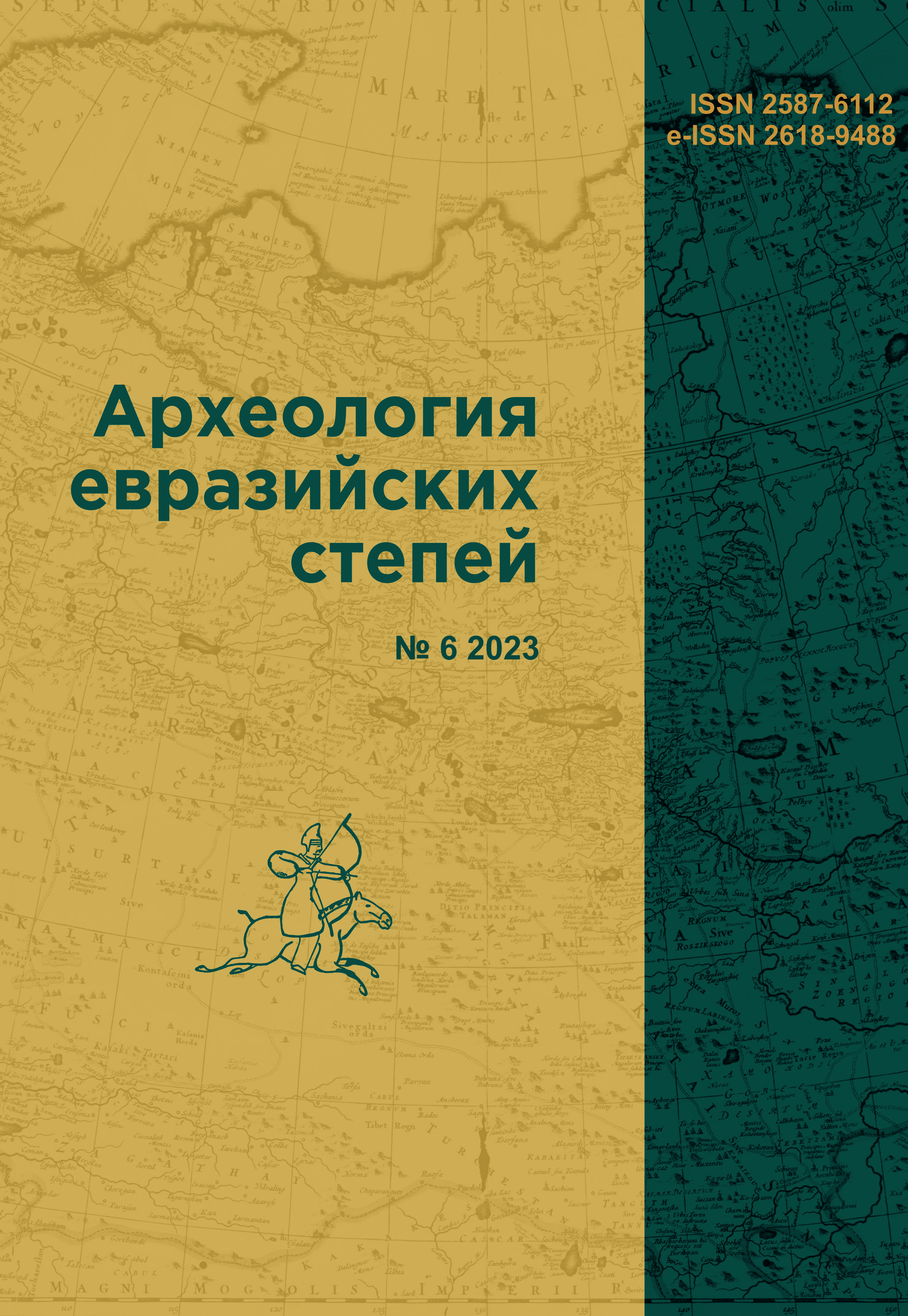Kerensk and Lomov Frontier Lines: history and prospects of study
DOI:
https://doi.org/10.24852/2587-6112.2023.6.171.177Keywords:
archaeology, historiography, Penza region, Kerensk-Lomov frontier line, defensive line, watchman service.Abstract
The history of studying the Kerensk and Lomov frontier lines has more than two and a half centuries, but it has not yet become the subject of a special historiographical analysis. Interest about the earthworks of the frontier line was formed at the end of the XVIII century, when information about them appeared on the pages of travelers' and writers' works. Since the second half of the XIX century, local historians began to collect archival documents about the Penza Governorate frontier lines. The difficulty of their identification was connected with the fact that a significant part of the documents was lost in the fires in the archives of the Prikaz of the Kazan Court. Studies of local historians were aimed at clarifying the location of earthen ramparts, establishing the time of appearance of defensive fortifications. In addition to documents they relied on the data of local legends and tales. The greatest contribution to the study was made by F.F. Chekalin, V.R. Khokhryakov, P.N. Chermensky, A.L. Khvoshchev. In the second half of the XX century V.I. Lebedev started systematic studies of the frontier lines. In addition to studying archival data, he organizes field surveys. As a result, the fortifications of Kerensk and Lomov lines were localized on the area, the exact dates of their construction were established, and the composition of the service people was determined. The results of the studies were summarized in V.I. Lebedev's monograph. Recently, archaeologists have started to study the defensive structures of the frontier line. Especially promising are the studies by lidar imaging method. It allows to get 3d images of objects. Political, social and economic aspects of the functioning of the frontier lines, conducted within the study of the Russian frontier issues, are becoming more often in sight of specialists.
References
Belorybkin, G. N. 2012. In Voiadzher: mir i chelovek (Voyager: World and Man). 3, 104–107 (in Russian).
Belorybkin, G. N., Kishinskaya, S. A. 1995. Istoriografiya drevney istorii Penzenskogo kraya (Historiography of the ancient history of the Penza region). Penza: Penza State Pedagogical Institute (in Russian).
Borisov, V. 1898. Stroel'naya kniga goroda Penzy (Building book of the city of Penza). Moscow: University Printing House (in Russian).
Vikhlyaev, V. I., Danilov, P. S., Zeleneev, Yu. A. 2015. In Vestnik NII gumanitarnykh nauk pri Pravitel'stve Respubliki Mordoviia. (Bulletin of the Research Institute of the Humanities by the Government of the Republic of Mordovia) 35 (3), 103–108 (in Russian).
Gorozhansky, N. P. 1884. Materialy dlya arkheologii Rossii po guberniyam i uezdam (Materials for the archaeology of Russia by governorates and districts) 1. Moscow: “A. A. Kartsev” Publ. (in Russian).
Lebedeva, L.V., Stavitsky, V.V. 2023. In Vestnik Samarskogo universiteta. Istoriya, pedagogika, filologiya (VESTNIK of Samara University. History, pedagogy, philology) 3 (31), 31–37 (in Russian).
Lebedev, V. I. 1973. In Dergachev, A. F. et al. (eds.). Ocherki istorii Penzenskogo kraya (Essays on the history of the Penza region). Penza, 18–41 (in Russian).
Lebedev, V. I. 1986. Legenda ili byl': Po sledam zasechnykh storozhey (Legend or true story: In the footsteps of the frontier watchmen). Penza; “GUMNITS” Publ. (in Russian).
Lebedev, V. I. 2006. Legenda ili byl': Po sledam zasechnykh storozhey (Legend or true story: In the footsteps of the frontier watchmen). Penza (in Russian).
Mogilevsky, K. I. et al. 2022. Linii rosta. Pamyatniki istoriko-kul'turnogo naslediya pogranich'ya Rossii XVI–XVIII vv. (Lines of Growth. Monuments of the Historical and Cultural Heritage of the Borderlands of Russia in the 16th–18th Centuries). Moscow: “Kuchkovo pole” Publ. (in Russian).
Mizis, Yu. A. 2018. In Zhigalov, V. M. (ed.). Belgorodskaya cherta (Belgorod line) 3. Belgorod: “Konstanta” Publ., 83–87 (in Russian).
Peterson, G. P. 1882. Istoricheskiy ocherk Kerenskogo kraya (Historical essay about the Kerensk region). Penza: “Guberskaya tip.” Publ. (in Russian).
Stavitsky, V. V. 2008. Arkheologicheskie izyskaniya M. R. Polesskikh (Archaeological studies by M.R. Polesskikh). Penza: Penza State Museum of Local (in Russian).
Falk, J. P. 1824. Zapiski puteshestviia akademika Fal’ka (Notes of Academician Falk’s Journey). Series: Polnoe sobranie uchenykh puteshestvii po Rossii (Complete Collection of Scientific Journeys through Russia) 6. Saint Petersburg: Imperial Academy of Sciences (in Russian).
Khvoshchev, A. 1922. Ocherki po istorii Penzenskogo kraya (Essays on the history of the Penza region). Penza (in Russian).
Khokhryakov, V. Kh. 1903. In Trudy Penzenskoy uchenoy arkhivnoy komissii (Proceedings of the Penza scientific archival Commission) book 1. Penza, 1–41 (in Russian).
Chekalin, F. F. 1890. In Izvestiya Tambovskoy uchenoy arkhivnoy komissii (Proceedings of the Tambov Scientific Archival Commission) issue 54. Tambov, 187–281 (in Russian).

Downloads
Published
How to Cite
Issue
Section
License
Copyright (c) 2023 V.V. Stavitsky

This work is licensed under a Creative Commons Attribution-NonCommercial 4.0 International License.







